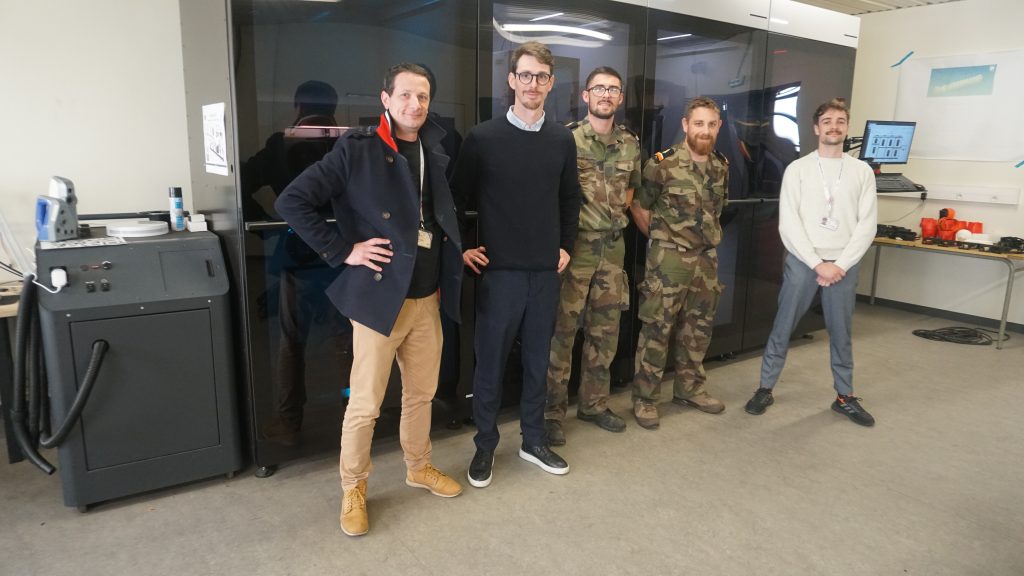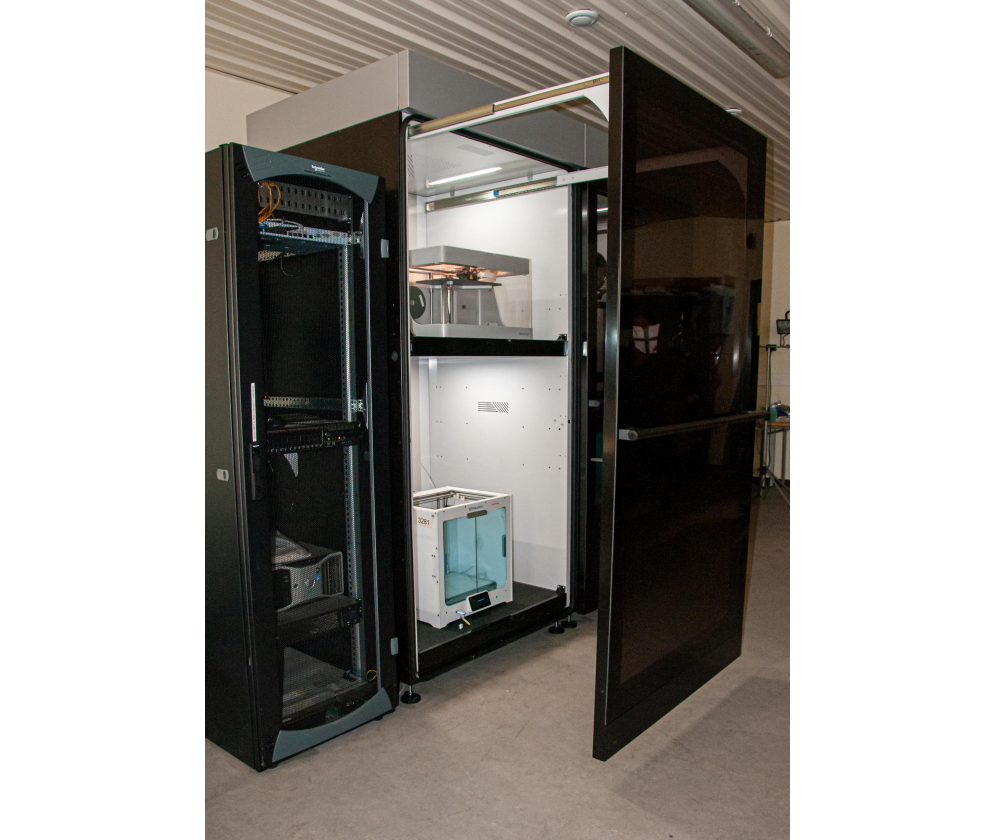Handddle, a French startup specializing in 3D printing production lines, often called 3D printer farms in the wider industry, has renewed its ongoing collaboration with the French Air and Space Force. The aim is to expand French forces’ ability to deal with unforeseen circumstances and quickly adapt to new situations on the ground.
This collaboration marks part of the firm’s continued efforts to support the growth of Additive Manufacturing within the defense sector, and meet the French military’s growing production needs.
Having installed the first of its Smart Farm micro factories within the French Air and Space Force’s National 3D Printing Pole (PNI3D) last year, the startup is now set to add two new installations. These micro factories offer optimal conditions for 3D printing, and include software that enables full control over the printer fleet in real time.
These facilities purportedly enable the production of complex custom parts in record times, allowing military organizations to meet production targets, and quickly produce components that follow strict quality, safety and conformity restrictions.
“With the possibilities offered by our platform during production phases, we can help them automate workflow tasks related to the management and security of production environments, allowing soldiers to focus on their main mission,” commented Handddle co-founder Dylan Taleb.

Smart Farms and defense optimization
As a key technology within the defense industry, 3D printing is something which the French military is keen to exploit.
Incorporating several desktop FFF 3D printers from OEM’s such as Markforged and Ultimnaker, Handddle’s first PNI3D Smart Farm marked the beginning of the company’s defense industry collaborations. Since its installation in April last year, Handddle and the French armed forces have built a robust and ergonomic process for the production of parts that meet the French Air and Space Forces’s stringent industrial standards.
Building on the experience of the past year, the startup has collated user feedback and conducted in depth data analysis in order to develop and evolve their offering. As such, these two new installations offer improved hardware and software capabilities, with many of the workflows becoming increasingly automated.
Multi-site testing has also demonstrated an ability to remotely control and supervise distribution production, further optimizing the French Air and Space Force’s production process. Additionally, Handddle is investigating retrofitting capabilities, with the aim of upgrading its original Smart Farm micro-factory to incorporate these latest developments.
Looking to the future, Handddle is hoping to further expand its offering, deploying the Smart Farm on a larger scale in order to strengthen the independence, logistics, and resupply and sustain capabilities of the French Air and Space Force in times of crisis. Moreover, expanding the Smart Farm would also improve the French military’s adaptability on the ground.
The formation of a world wide Smart Farm network would greatly improve the technical availability and cost control of support, something which is crucial for armed forces deployed globally.

3D printing and the defense industry
Additive manufacturing within the defense industry is nothing new, with collaborations between 3D printing companies and national defense forces a common occurrence.
For instance, last month it was announced that Italian defense contractor Leonardo had collaborated with SFM Technology and large-format 3D printer manufacturer BigRep to 3D print key components for the Royal Navy’s AugustaWestland AW101 helicopters. When tasked with developing and manufacturing a new main rotor blade restarting cradle, Leonardo leveraged additive technology, producing the first 3D printed helicopter restraint cradle of its kind.
Elsewhere, it was announced in January of this year that the US Navy has collaborated with Philips, installing their Additive Hybrid metal 3D printing technology on board their vessels. Powered by metal 3D printer developers Meltio and Haas, this technology was installed aboard the USS Bataan in an effort to improve the ships self-sufficiency when on operation. At the time, Rear Admiral Brendan McLane, the US Naval Surface Forces Commander, stated that “the introduction of additive manufacturing into naval operations supports readiness and self-sufficiency.”
Subscribe to the 3D Printing Industry newsletter to ensure you keep up with the latest 3D printing news. You can also follow us on Twitter, like our Facebook page, and subscribe to the 3D Printing Industry Youtube channel to access more exclusive content.
Are you interested in working in the additive manufacturing industry? Visit 3D Printing Jobs to view a selection of available roles and kickstart your career.
Featured image shows the Handddle PNI3D Smart Farm. Photo via Handddle.


